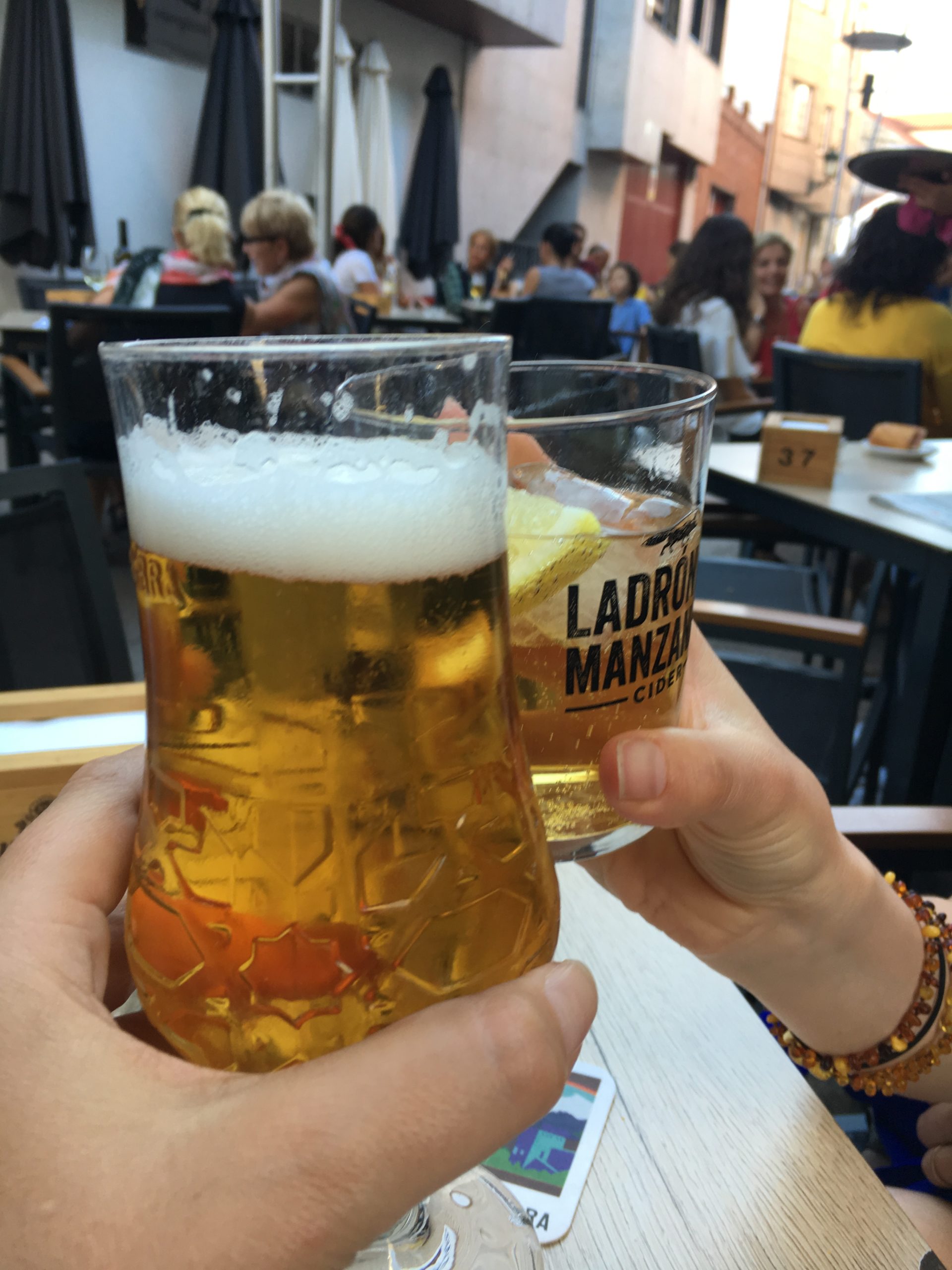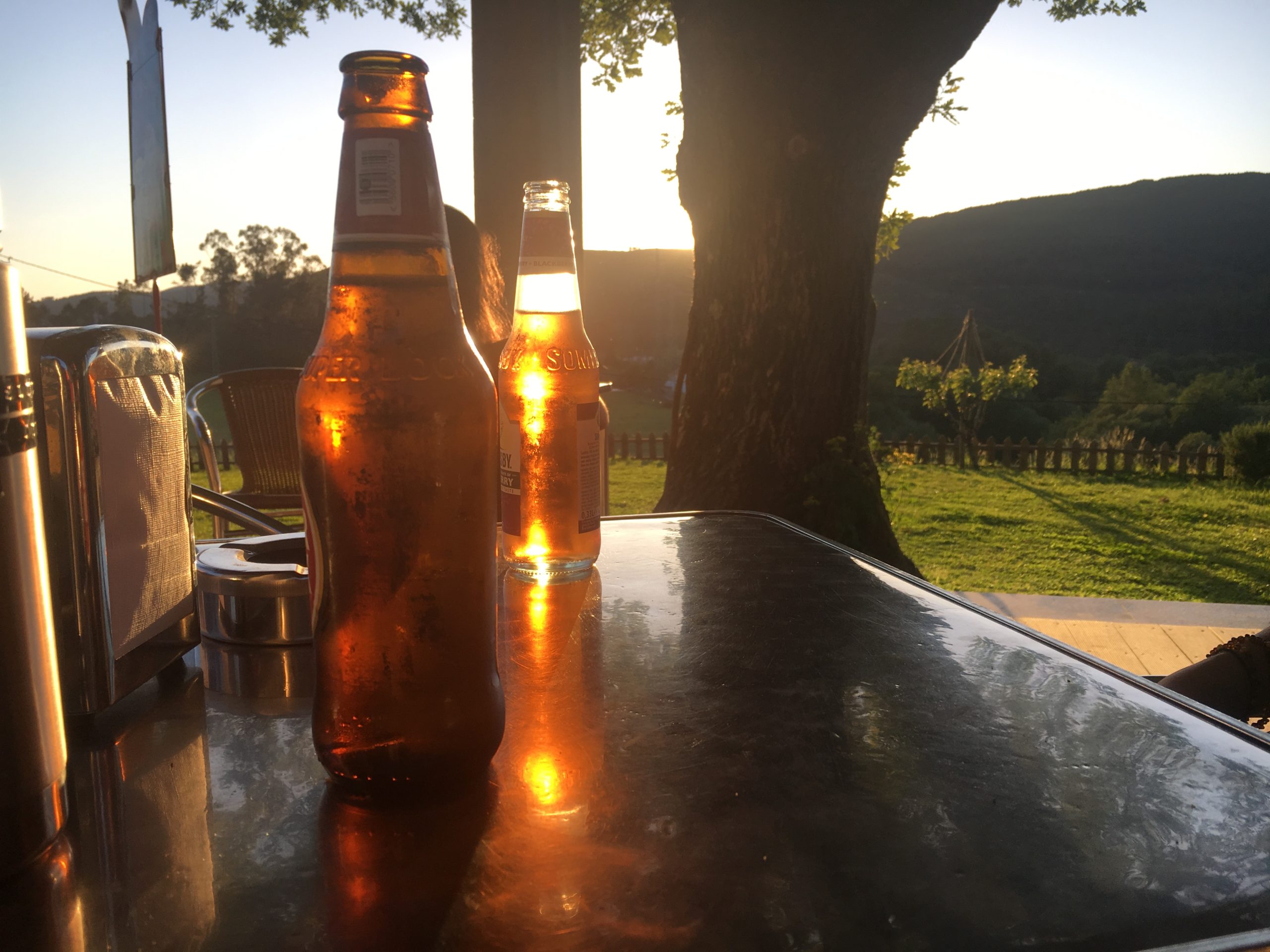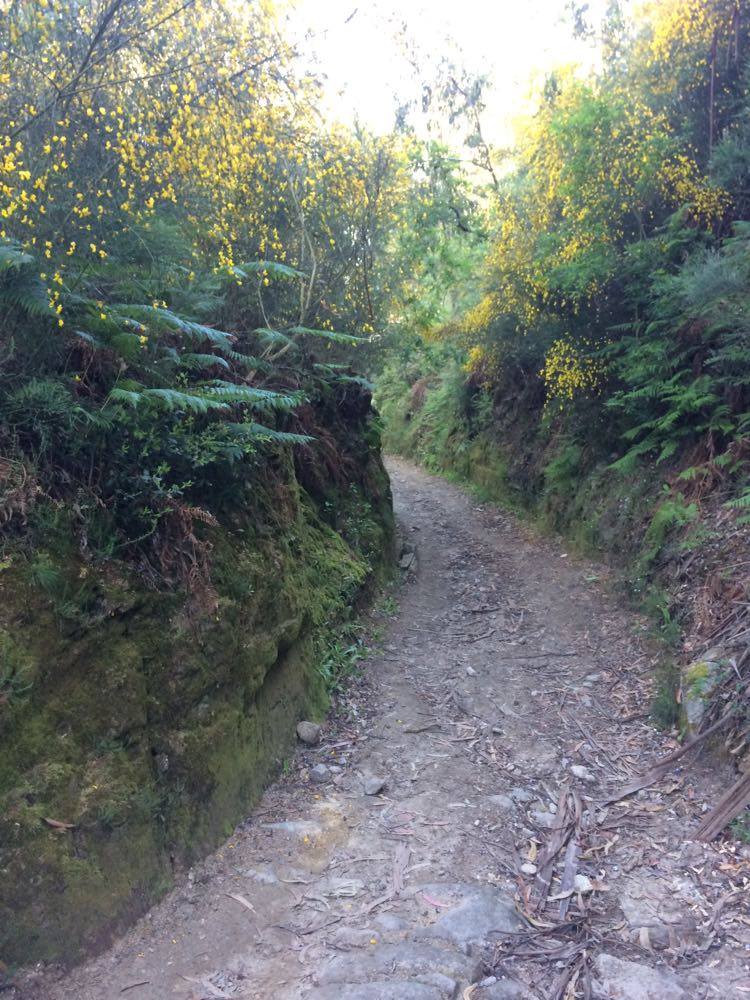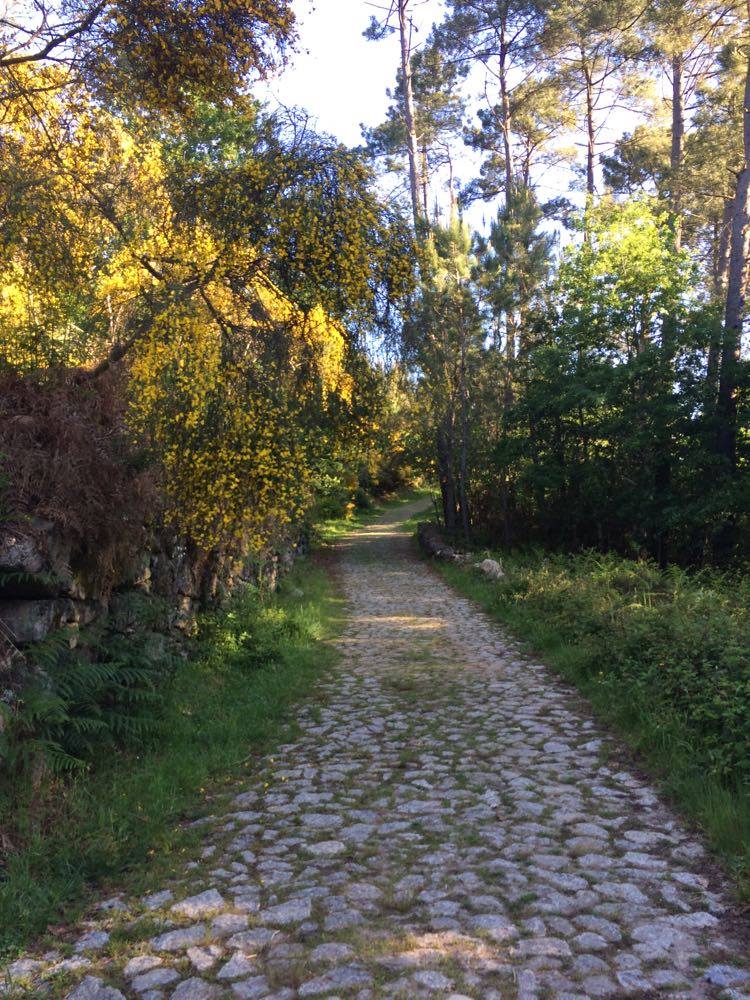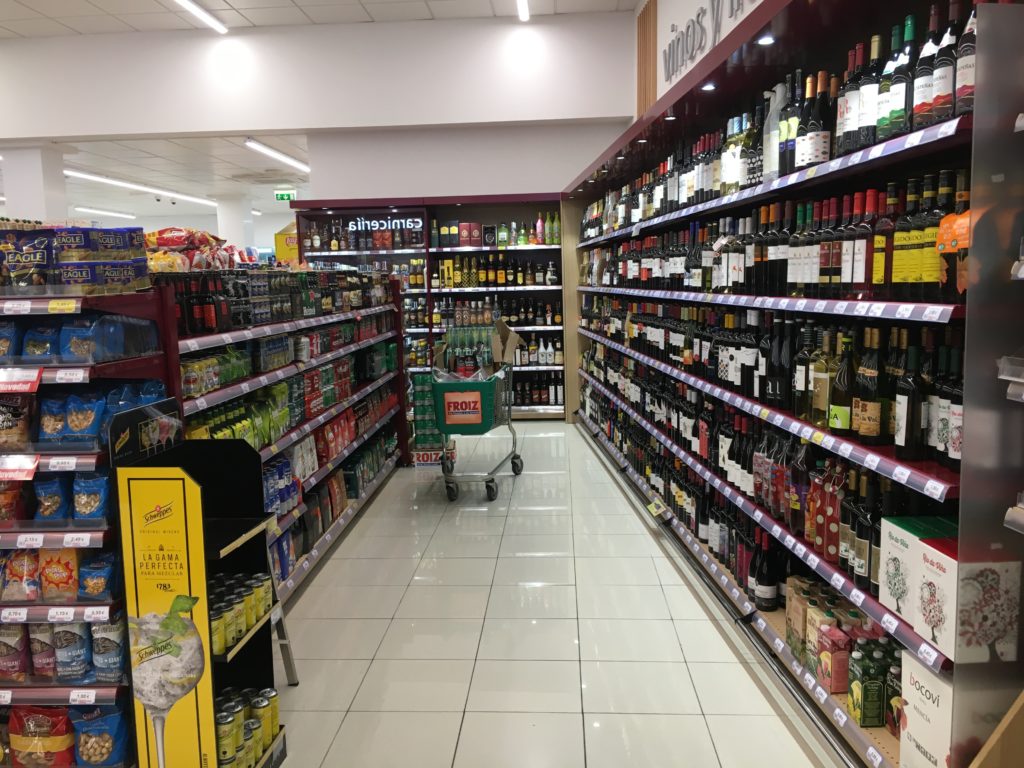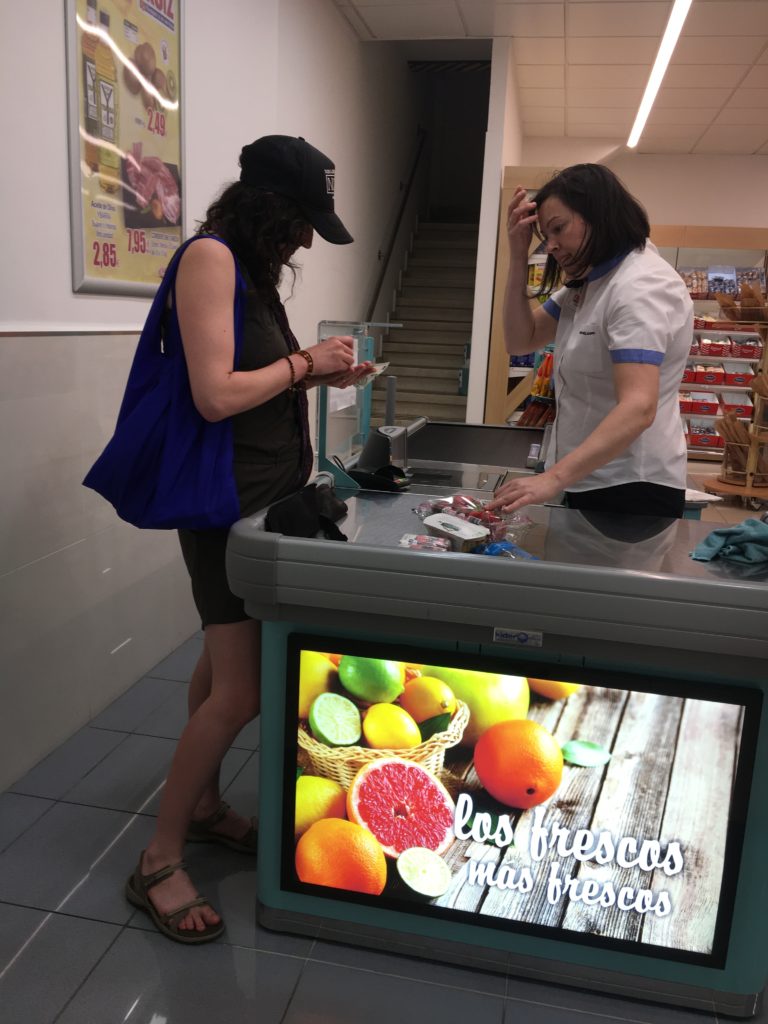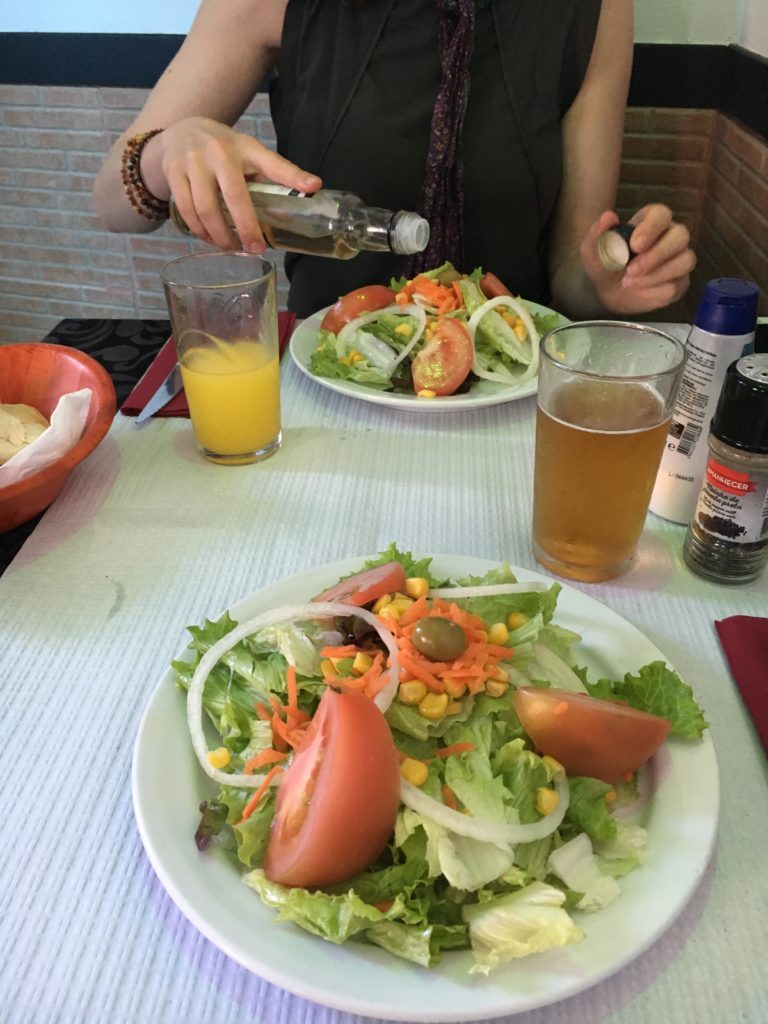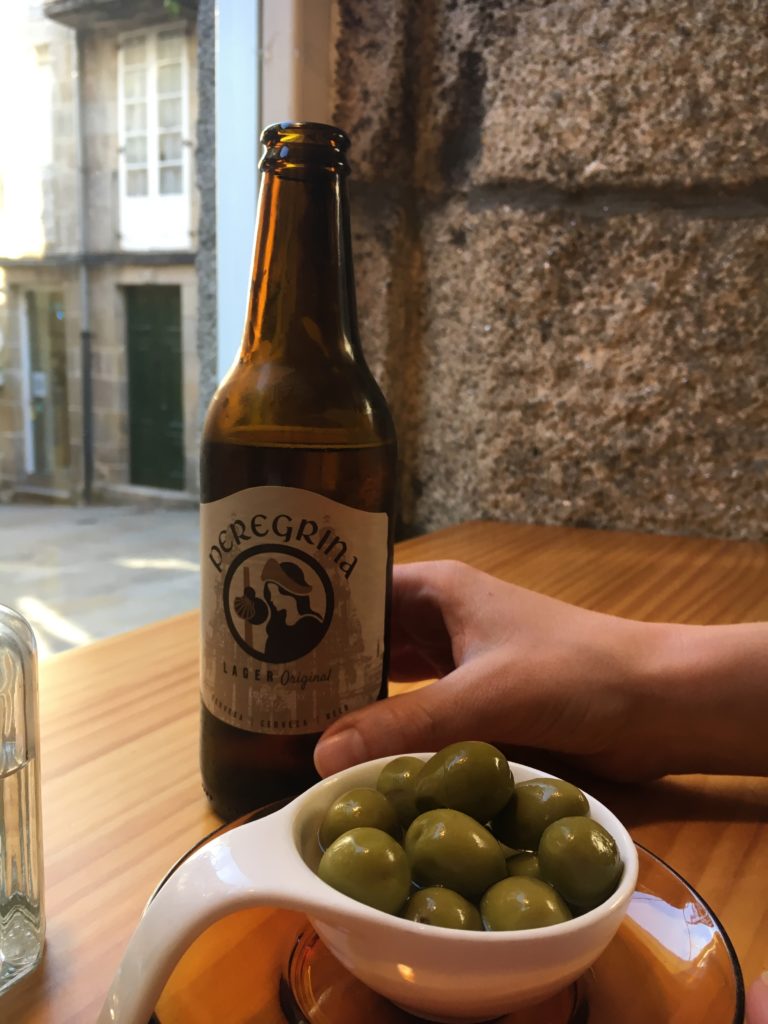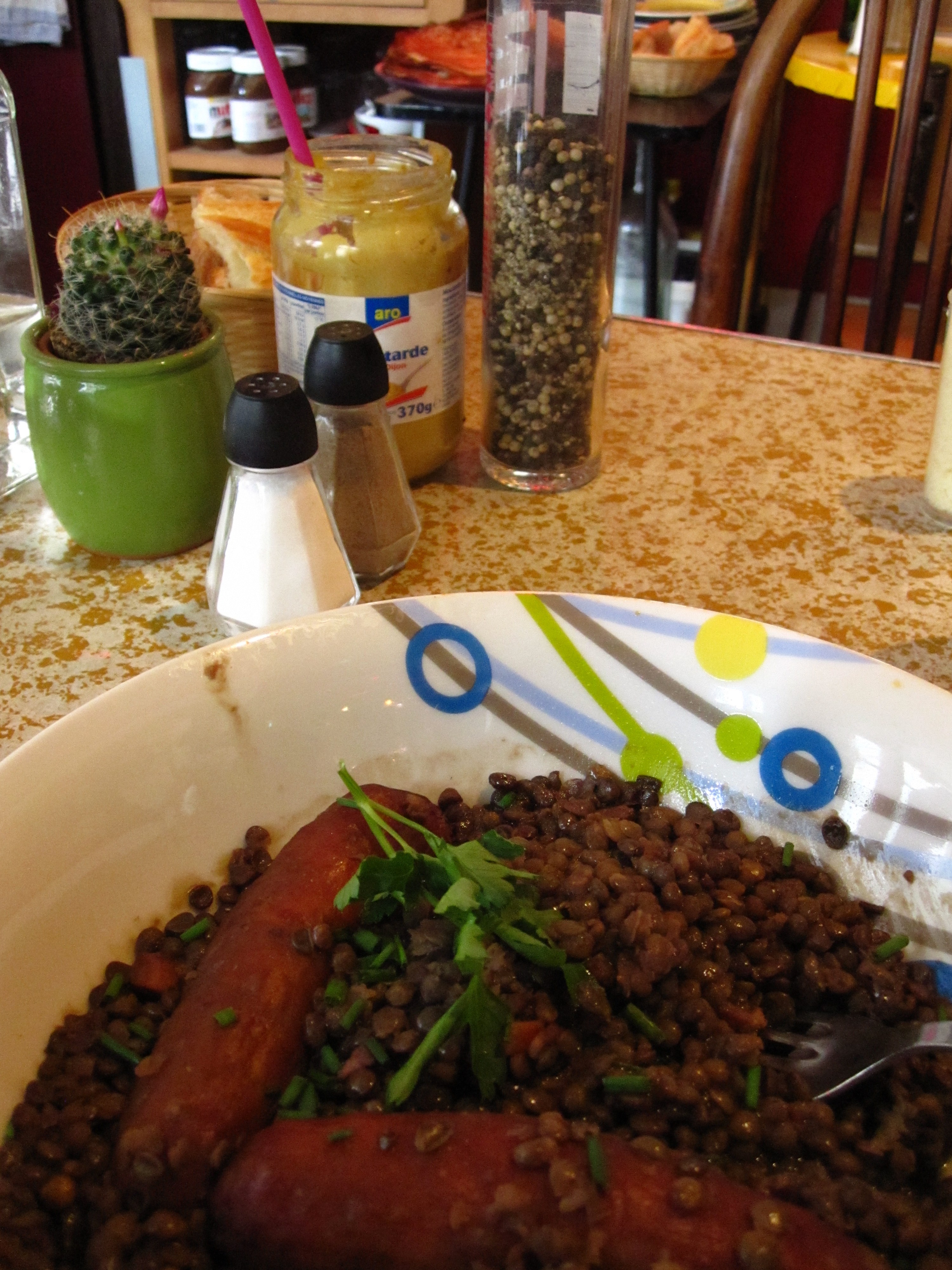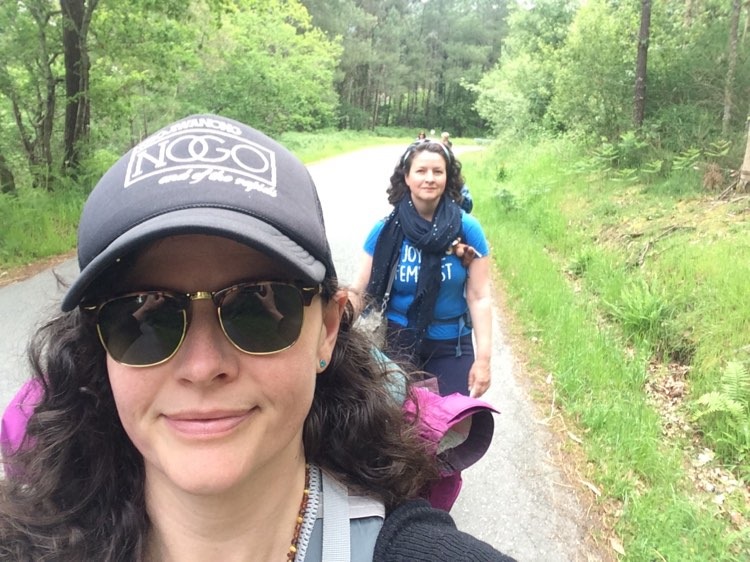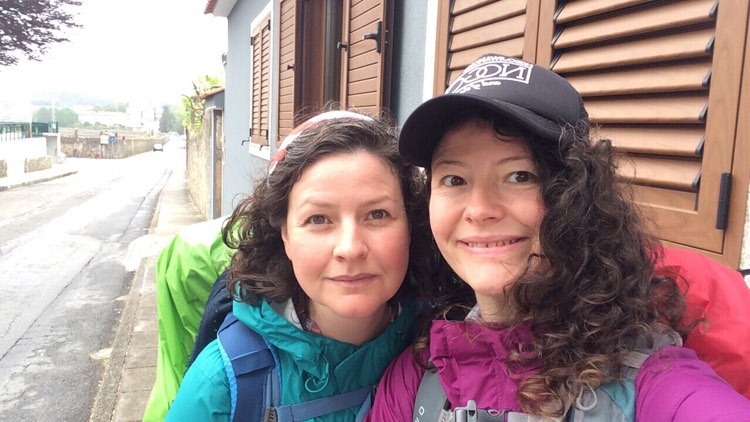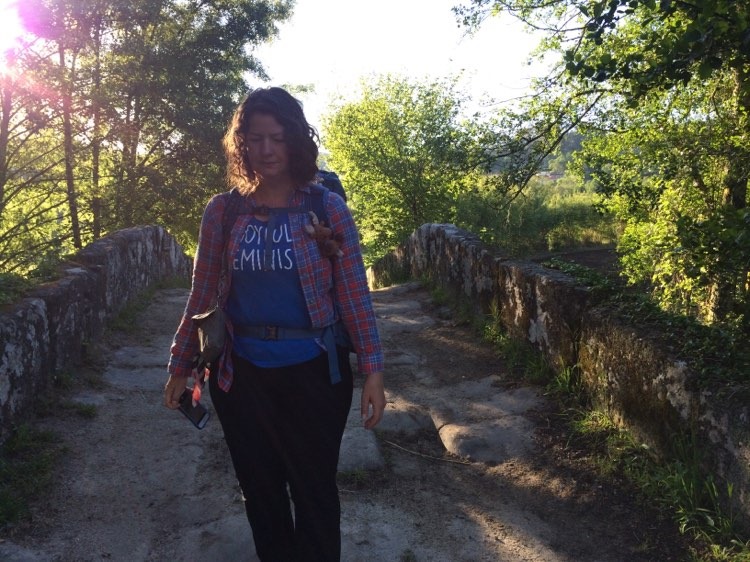
Camino Day 6 – Rubiaes to Tui
6 hours walking (there’s a time change between Portugal and Spain, so you lose an hour when you cross the border), 22.5 km walked
(Walking times includes meals and breaks)
After an okay night’s sleep, we got up and back over to Café São Sebastião (where we’d had our beer the night before) for “breakfast” – two pain au chocolate and coffee. It’s such a lovely spot, and so cheerful, and so convenient, that we were glad to spend a little time there again. But before long, the road was calling us, and we hitched on our packs and got moving.

Right past Rubiaes, we crossed a Roman bridge, Pont Romana II, over the Rio Cuoro, and along the old millrace, through farmer’s fields and forests.
The path here is well-defined and well-maintained, and it made for a beautiful and easy walking day. We had a quick and unmemorable stop around 9am at Cafe Castro in Sao Bento da Porta Aberta, and then back on the road.
This signpost marks the mid-way point in our trip, 135 km walked so far from Porto, another 135km to walk to get to Santiago de Compostela.
The day’s route was pretty, but uneventful. Mostly downhill, it’s a nice easy walk, and as we got closer to Valença, the last town on our way before the Spanish border, we started to see more towns and villages. The small chapels and shrines are a bit more frequent here, and I love them; the variations in local iconography are really interesting, from a weatherbeaten cross with a fairly traditional depiction of the crucifixion to a Jesus with dreamy eyes and impressive mustachios.
I also love the iconography of traffic signs in different parts of the world; this one is quite unequivocal in its warning.
As we got closer to Valença, we ran across the best roadside snack stand, with loads of fresh fruit, bags of trail mix, agua fresca and other cold drinks, and quiche. I don’t know how it is on the other pilgrimmage routes, or at other times of year, but this was very uncommon in our experience and also very welcome! We bought a few snacks and got a sello.
After the experience the night before, barely getting a bed at the end of our walk, and really feeling the heat of the day, we were worried again about whether or not we’d get a place to stay for the night. After some debate as we got closer to Tui, we decided to spend the night in Valença at Albergue Sao Teotonio and cross the Spanish border in the morning. The guidebook indicated that there was a pretty bit of ancient city that was worth exploring, and the hostel was modern and spacious. So around noon we backtracked to the Valença albergue and found it was closed until 2pm, so we joined the small line of pilgrims waiting for it to open.
Waiting in the shade was pleasant enough, at the height of the afternoon’s heat, but we were hungry and needed a bathroom and weren’t very excited about the albergue’s location on the outskirts of the city, surrounded by strip malls and a fire station. We were waffling on our decision to stay when a group of other pilgrims rolled up, the noisy tour group we’d shared a room with at Ponte de Lima. We’d seen them a few times along the route, and found them to be consistently rude and annoying. As they smugly cut in front of us in line at the Valença albergue, we both saw our nemesis: the 6am lightswitch flipper. I looked at Sammi, Sammi looked at me, and we both decided to take our chances on the albergue in Tui.
Entering the walls of the old city/fortress, we found a small church. I love old Catholic churches so much, but I love Saint’s relics and reliquaries even more, I can’t even tell you why. I have no idea who these specific saints are, but I just think it’s incredible that someone preserved these small fragments of bone or tooth or hair, maybe for hundreds of years, carved a seriously ornate container for them, and set them in a church. I also love that some of the statues of Jesus and the other saints have wigs that are made from real human hair. And of course, every art history student knows and loves a Saint Sebastian.
The Caminho route leads through it, so we did take a look around the much-praised old city with it’s thick, fortress walls. It was more touristy than we liked, and small, so it didn’t take long to peruse the questionable souvenirs and the narrow streets on our way through. I think we were glad that we’d made the choice to move along to Spain.
Taking a moment to say goodbye to beautiful Portugal, we headed across the bridge to Spain. Like any internal EU borders, there’s no checkpoint, so at a certain point mid-river you cross from one country to another. It’s almost as though borders are imaginary :)
You lose an hour crossing the border, so we left Portugal at noon and arrived in Spain at 1pm.

Albergue de Peregrinos de Tui is right in the heart of the Medieval neighbourhood near the cathedral. The views from the dorms of the city and the river valley are excellent. The laundry facilities are standard for a pilgrim Albergue, though more spacious than the ones we saw in Portugal. The kitchen is sort-of just a room – no fridge, no utensils, no pots or pans – something we learned was standard in Spanish albergues, but was a big surprise after Portugal. There were barely any plugs to charge phones, which was annoying. It’s a former monastery, so the space is light and airy, and there’s a lovely courtyard in the back where we sat and watched the barn swallows swoop and dive.
We rested for a couple of hours once we got to the albergue, then around 6pm, when the shops re-opened, we headed out to get some groceries, some dinner, and a drink at Ideas Peregrinas, a non-municipal albergue (slightly more expensive than the municipal albergues) with a lovely restaurant and shop. We’d seen Peregrina Lager a few times that day along the route, and decided to give it a try (it’s fine, but nothing to write home about), and the staff gave us a dish of olives as well. Prices for food, drink, and a night’s stay got slightly higher in Spain; in Portugal, we’d averaged €5-€6 a night each, but in Spain it was one or two Euros more expensive.
We did a short walk around the Medieval part of Tui before heading back to the albergue as the sun was setting, around 8:30pm, to get showered, wash clothes, and hit the sack.
Most evenings along the Camino, pilgrims are in bed b 9 or 10; unusually for us, as night owls, we followed that pattern as well, knocked out by the heat and the walking. This evening, as peace fell over the dormitories of the medieval monastery we were sleeping in that night, we were happy that we chose to go on to Tui.
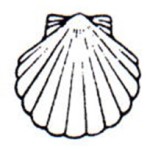
Follow our Caminho Portugues adventure!
Landing Day in Porto
Day 1 – Porto to Vila Cha
Day 2 – Vila Cha to Rates
Day 3 – Rates to Barcelos
Day 4 – Barcelos to Ponte de Lima
Day 5 – Ponte de Lima to Rubiaes
Day 6 – Rubiaes to Tui (you are here)
Day 7 – Tui to Porriño
Day 8 – Porrino to Redondela
Day 9 – Redondela to Pontevedra
Day 10 – Pontevedra to Caldas des Reies
When I’m done posting these, I’ll also post an article of my advice for anyone thinking of walking the Caminho/Camino, and I’ll link it here!
Photos by Candace Shaw and Samantha Shaw
